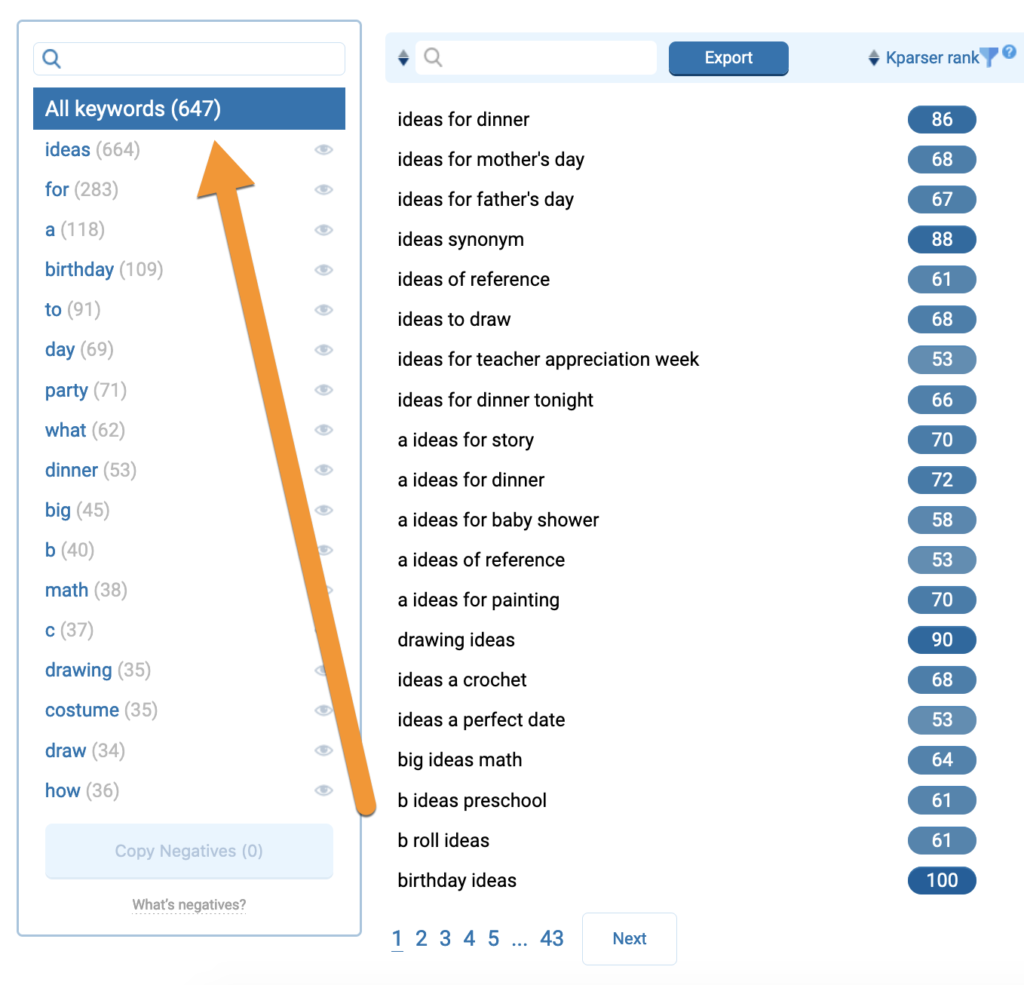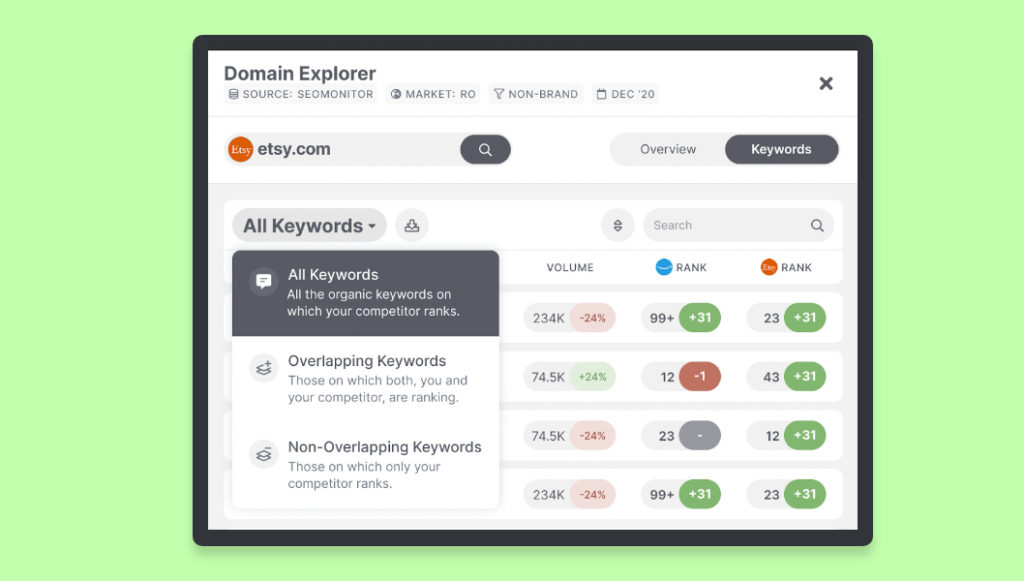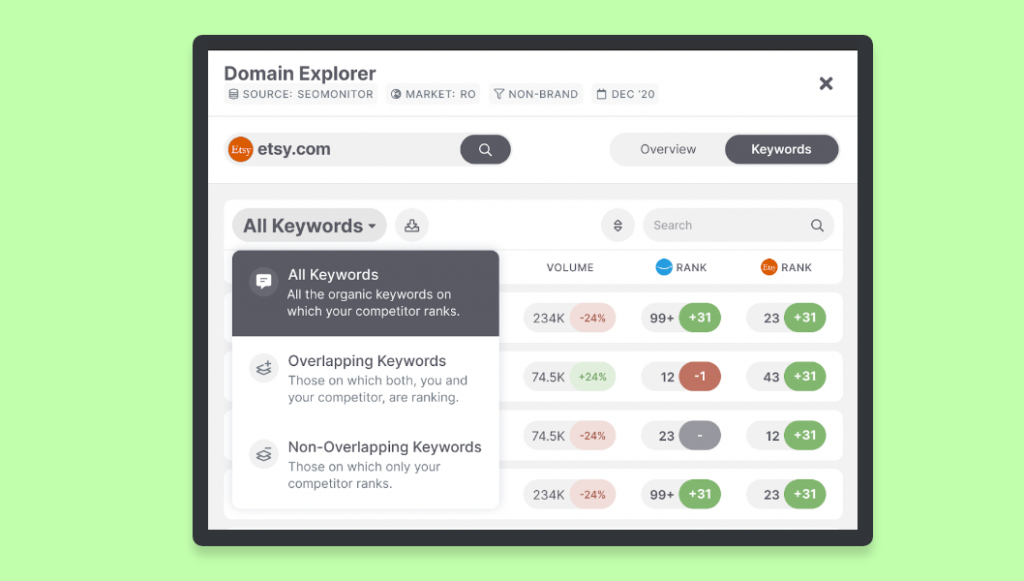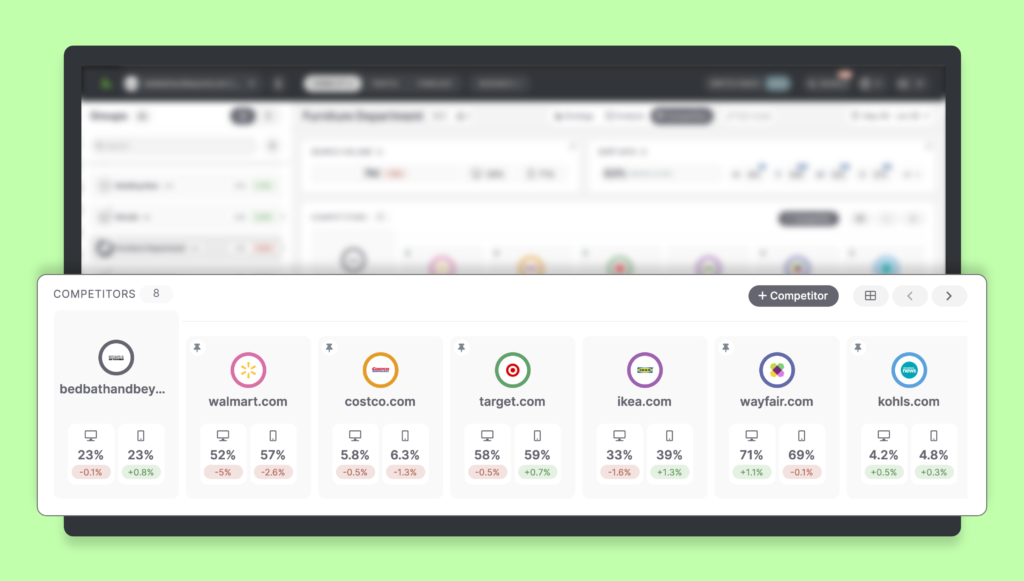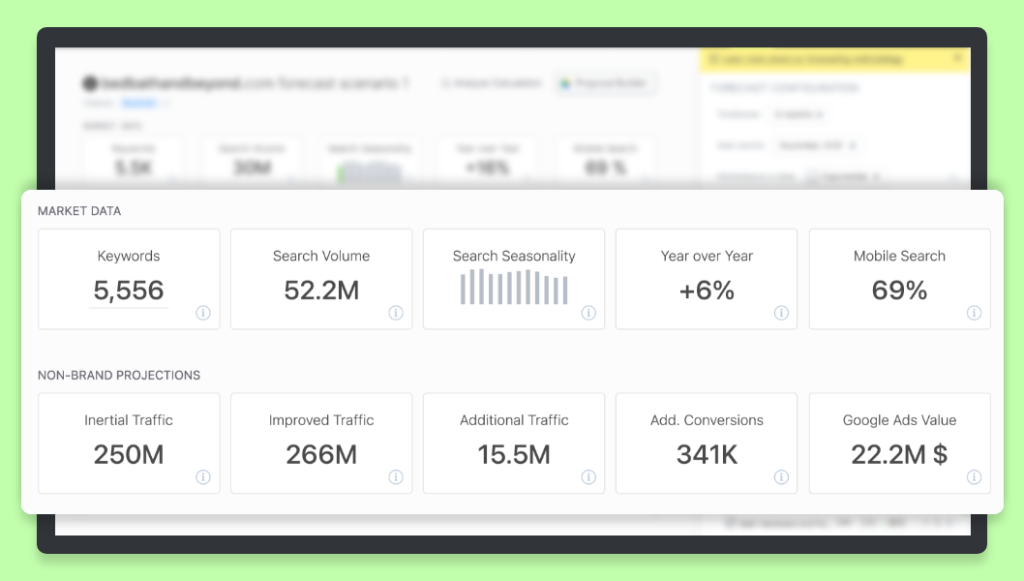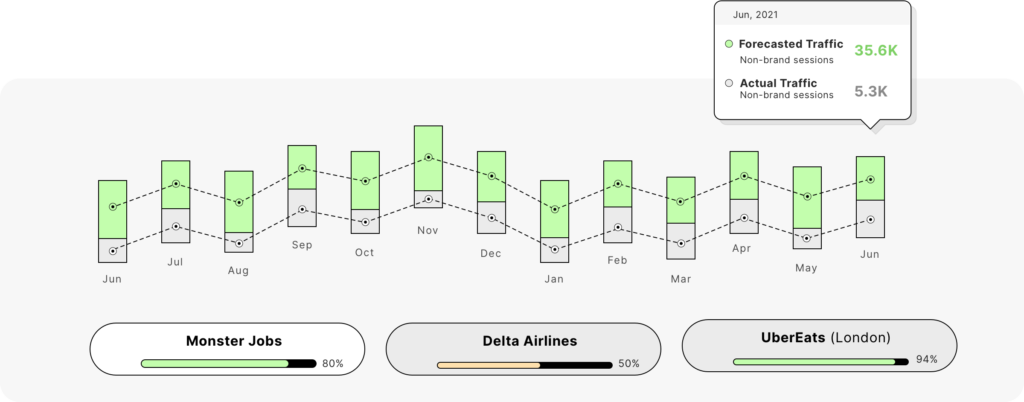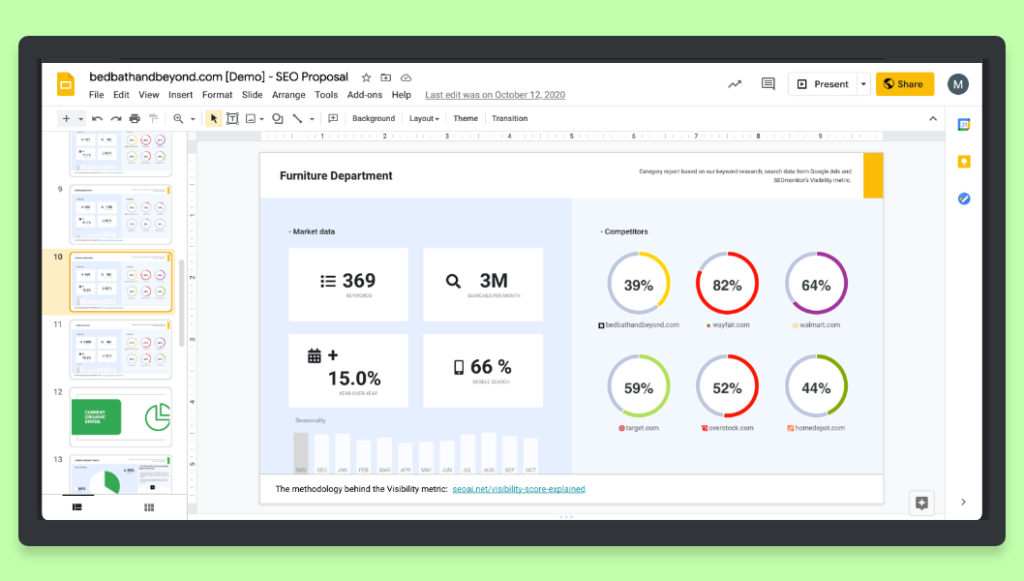30-second summary:
Keyword research is at the heart of understanding where your business stands and what your end-users expectSurveying or monitoring your analytics is a great way of listening to your customers or readers for effective content ideasSeasonality is a great way to find fresh content ideas by finding angles where your primary topic overlaps with seasonal interestsCollaborate and meet real people – use every opportunity (events, meetups, live sessions) to talk to people and listen to what they’d be interested in consumingUse “question research” to understand the existing information gaps in the marketRe-package your old, better-performing content into new (updated) assets
If you feel like everything has already been written and you have no idea what else you can write about, here are six content ideas for you that help you come up with valuable and engaging content this year:
1. Use new keyword research tools
Keyword research is not just for SEO! They can give you in-depth insight into your audience’s interests, questions, and struggles. Research and address them in your content.
The key is to try a new tool from time to time. Why? Each tool uses a different data source or a different output or a different way to organize those keywords. Any of these will be enough to give you lots of content ideas.
Luckily, we have quite a few tools to choose from.
Kparser
This tool will give you pretty much everything you need to create a good topic list. Or at least point you in the right direction. Look at the left-hand channel to find popular concepts around your main topic and build your content around those!
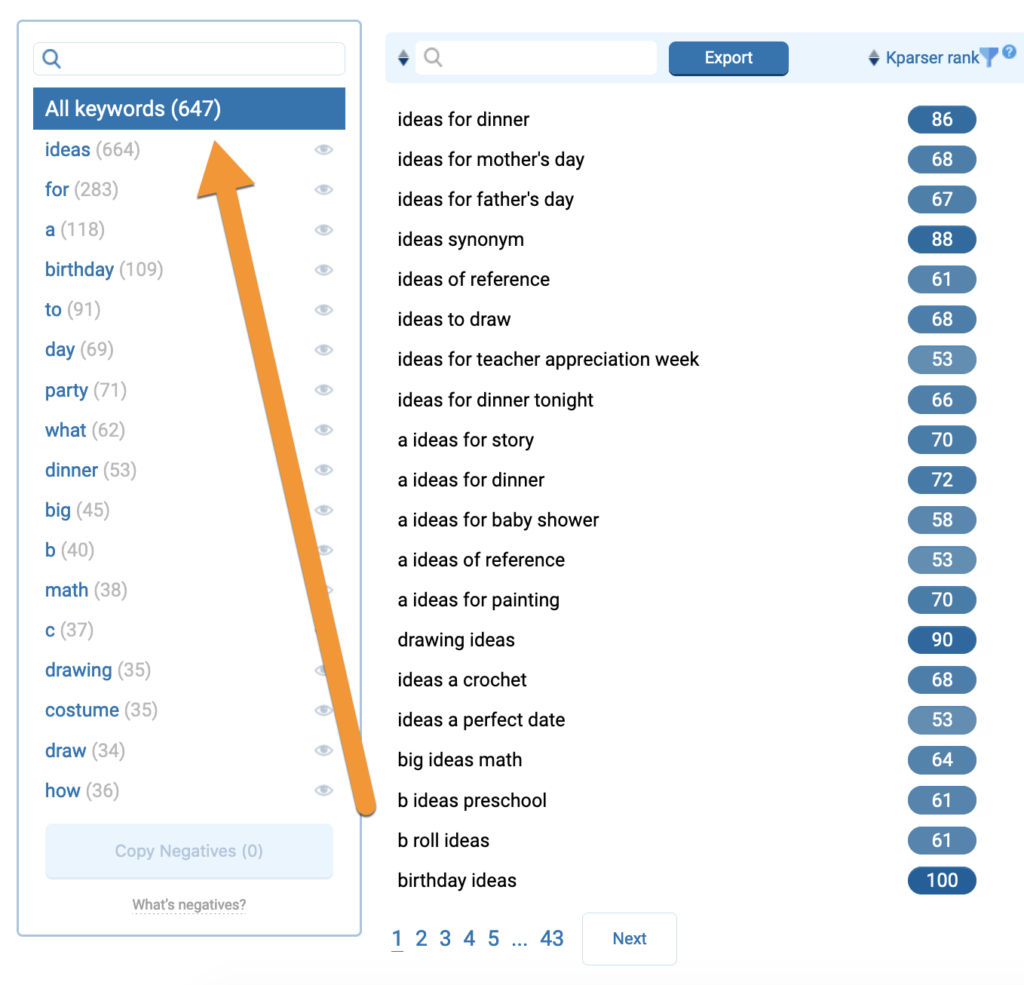
Source: Screenshot by the author
Kparser offers a premium version for $69 a month but I’ve always been using its free version which is great!
KeywordTool.io
KeywordTool.io allows access to lots of data sources, including Google, Youtube, Amazon, Instagram, and Twitter.
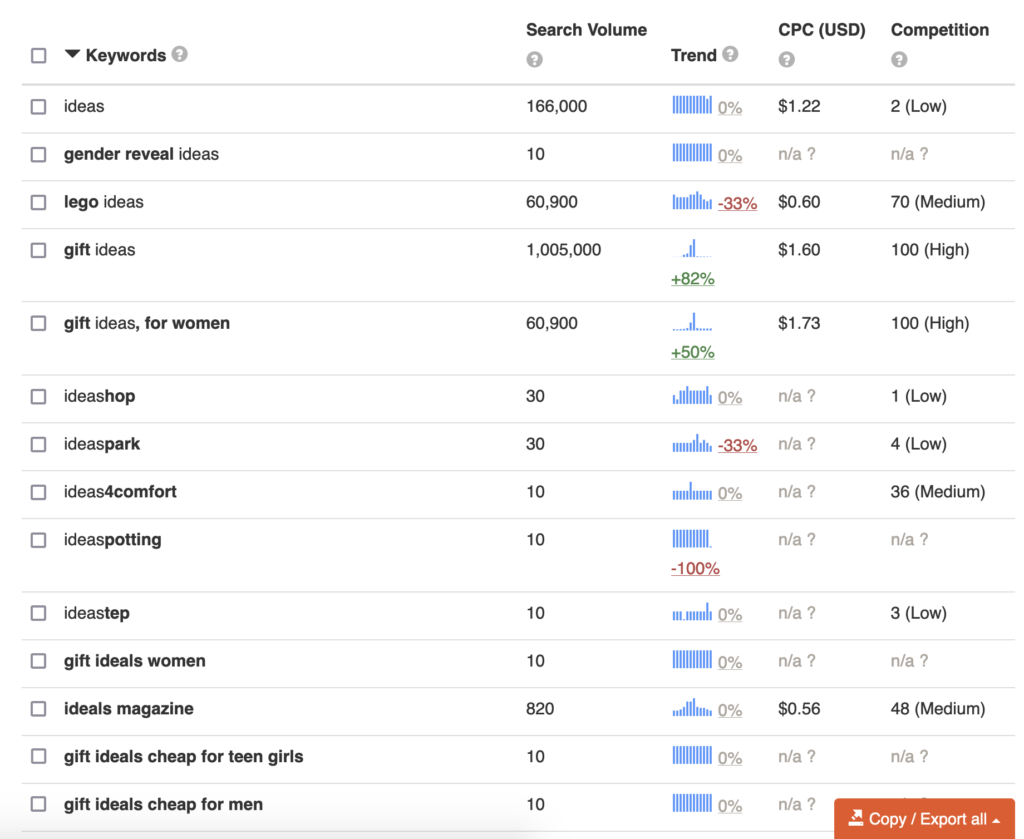
(Content ideas sourced from Amazon)
Source: Screenshot made by the author
The tool will give you lots of ideas for free but to see each keyword analysis, you need to upgrade to one of the listed plans.
nswer the Public
This one you may not have heard of. It features a man called ‘The Seeker’, who impatiently awaits your questions. You put in keywords or phrases, he suggests some interesting topics.
Apart from being a great keyword research tool, this one is also great for question research (see my #5 tip on the list!) Using different ways to group and organize your keyword lists will likely uncover more ideas. These grouping techniques include keyword clustering and semantic research.

Source: Screenshot by the author
Answer the Public is freemium and comes at $79/month minimum if you pay for a year, but frankly I’ve never had to upgrade as the free version is simply awesome!
2. Turn to your actual customers for ideas
You know who you really need to listen to. Correct, your current and future customers. You want your content to make a difference for your bottom line, not just bring your word out there, no matter if anyone is there listening or not.
You don’t just want to be heard, you want to be heard by your target audience.
You can even gamify that process by building up your surveys with visualization tools, here are some extra tips on that.
You can offer a good mix of generic questions (like, ask about their lifestyle) which would help you build up your customers’ personas and target them better. Then come your brand-specific questions:
“What questions did you have when browsing our services?” “Were they sufficiently covered on the site?”
The latter will help you improve your site performance too.
The cool thing is that you will also be able to use your survey results in site content and articles, making your site intent-rich, trustworthy, and linkable.
It’s also a wise idea to set up a well-defined routine to help you record your customers’ questions as they come. This will help you in both content planning and social media goals.
Slack is a nice tool to help your in-team communication and idea-sharing. Simply set up a separate Slack channel and encourage your customer and support team to send your customers’ questions there as soon as they come across any.
Using your web analytics is another way to listen to your customers and readers. Finteza is a great solution to better understand which content and on-page elements your site users respond to best. It supports a variety of events including mouse-overs, clicks, and downloads allowing you to measure which content does a better job engaging your readers:
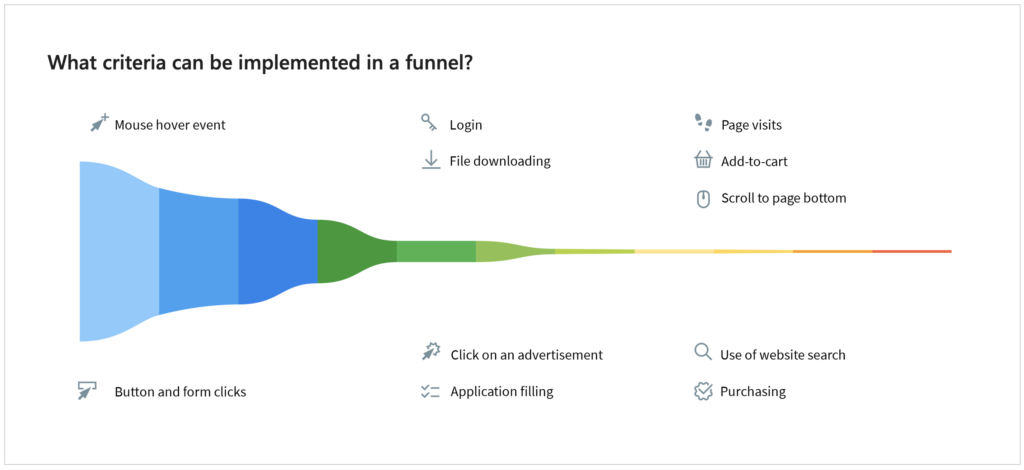
Source: Finteza
3. Take seasonal trends into account
There are holidays and seasonal trends to include in your content editorial plans. When you catch a trend, there’s always a huge boost of interactions, new followers, and clicks.
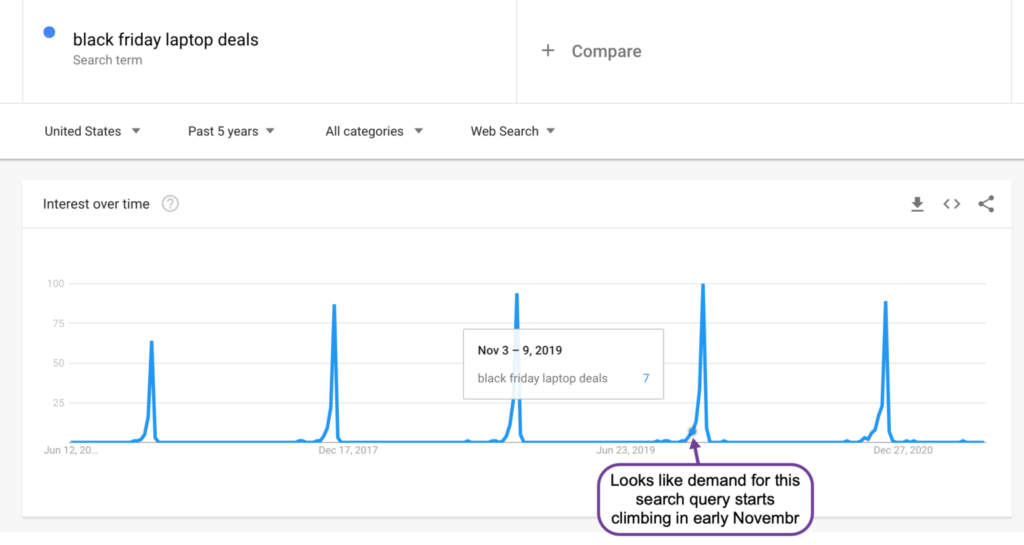
Source: Screenshot by the author
The great thing about seasonal trends is that you can plan your editorial calendar months in advance because they are easy to predict and repeat yearly. This means you’ll be able to re-use your calendar as a reference point to structure your seasonal content strategy and improvise for maximum success.
Simply sit down and plan your content assets for upcoming big holidays, seasonal events like spring cleaning season, summer holidays, Amazon Prime Day, and other noteworthy days that are relevant to your target customers.

Source: Screenshot by the author
You can use Google Spreadsheets to create your content roadmap. To better focus on ideation and get more inspired, I usually start with planning my seasonal content using a printable calendar which you can easily find using these steps.
There are handy calendar apps that can even integrate into WordPress to keep track of those holidays you may want to include in your social media editorial plan.
You can schedule social media updates as far as one year ahead to make sure there’s always something going on your brand channels no matter how busy you get.
4. Get out into the world
We have a tendency to look for our inspiration online because we are targeting an internet-based audience, which is totally understandable: you can discover so many wonderful topics on the web. It just isn’t the only place we can look and purely searching online actually limits our scope, and so our returns.
The most popular piece of content is one that comes from the real world. People love personal stories!
Go out into the real world. Seek out events in your industry, or things that are tangentially related. Discover how everyday experiences connect to your niche and use your social media channels as a platform to explain and share with others.
Get out of cyberspace and into meet-space!
A good way is to engage with your local community (now in a safe and socially distanced way!)
This serves as a great way to understand the pulse of your audience/target customers, their intent, and personal experiences that impact their decisions. Plus, you also earn a chance to introduce new people to your brand.
You can also connect with other local brands, businesses, and business owners and potentially work out some topic ideas that way.
5. Find out what people are asking online
Question research offers a few important marketing opportunities:
Questions give you lots of insight into what your target audience is struggling with and how to best help themQuestions are your best content ideation sourceCovering niche questions online opens up more organic search visibility opportunities including getting featured and ranking in “People Also Ask” resultsAsking a question on social media is one of the most important ways to increase your social media engagement because whenever they see a question mark, people have that natural reflex to stop and find an answer
So ask questions on social media often and engage with answers you receive.
If you are open to trying tools to bolster this exercise, Text Optimizer is a smart option. All you Just type your keyword into its “Topic Ideas” section and it will generate a list of topic ideas for you:
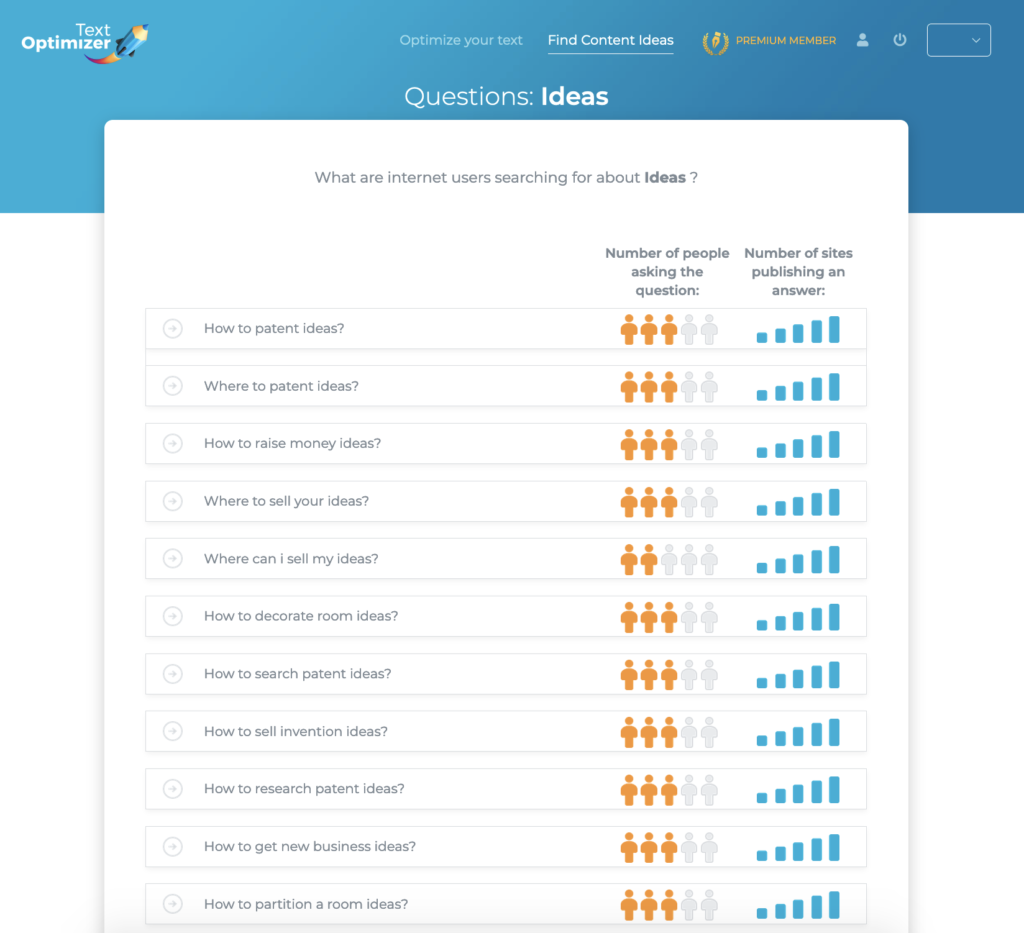
Source: Screenshot by the author
Every question is rated based on how many people are searching for it and how many sites are covering it – giving you a clear analysis of demand vs competition which informs your decision making.
The tool is paid and I am not aware of any alternatives. But the good thing is, question research will be mostly free. You will get some content ideas without the need to pay or register an account.
Quick tip: If you install their Google Chrome extension, most of that analysis will come for free as long as you use Google Chrome.
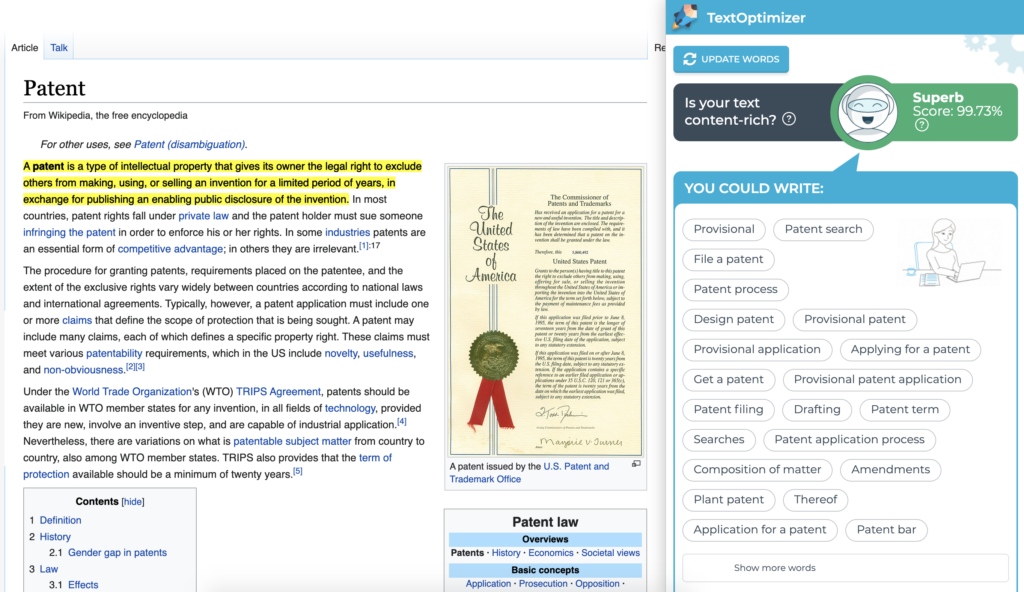
Source: Screenshot by the author
6. Learn the art of content re-packaging
Right off the bat, re-packaging content is going to be the best weapon in your arsenal. It takes what you already have and makes it stretch, getting more out of every piece you write. A lot of those prolific writers are using this tactic, albeit at its extreme. That is how they manage to get so much out without others writing for them.
So what does re-packaging content entail? It is creating new content directly from the old. Some ways to do that are:
Collecting articles into an ebook to give away on your site (As a bonus, this would also make a great lead magnetCreating a webinar with the information you have writtenTurning your content series into a (mini) email courseCreating newslettersRecording a podcast with the old post contentShooting a video with the old post contentConverting info from posts into infographicsMaking a Slideshare presentation with condensed slidesWriting new posts based on small details mentioned in old posts that have been expanded
These are only a few examples, but you get a general idea. A piece of content should never remain on its own without some form of recycled item coming out of it.
Looking at that list of ideas for re-packaging old content, did any of them stand out as forms of media you have never tried before? It may be time to start expanding what you create and produce something brand new.
This will attract a new kind of audience, one that is drawn to the media in question. Do you usually write blog posts? Start making infographics or videos. Never done a Slideshare slideshow? Consider it now, and see if it gets any bites.
You will be able to recycle your content better this way, and it will keep you from being burnt out. That will inevitably have an impact on the speed and quality of your content creation.
Content ideation isn’t easy and moreover, it is a continuous struggle. Let’s hope these ideas will get you out of that writer’s block!
Ann Smarty is the Founder of Viral Content Bee, Brand and Community manager at Internet Marketing Ninjas. She can be found on Twitter @seosmarty.
Subscribe to the Search Engine Watch newsletter for insights on SEO, the search landscape, search marketing, digital marketing, leadership, podcasts, and more.
Join the conversation with us on LinkedIn and Twitter.
The post Six content ideas to supercharge your marketing in 2021 appeared first on Search Engine Watch.

